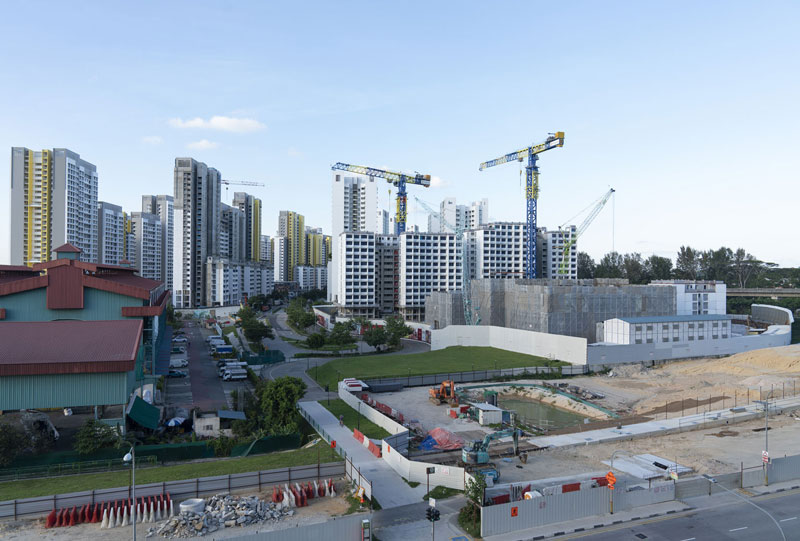
The collective sale phenomenon created immense wealth for sellers on the one hand, but generated a supply overhang of high-end homes at elevated prices on the other.
At that time, there were light forms of macro-prudential policies in place. Mortgages were capped at 80 per cent of valuations. Deferred payment schemes for new home purchases were withdrawn.
However, there were no "flood barriers" against foreign-fund-induced asset inflation, nor was there protection for locals from being priced out of the market. There was also little deterrence against short-term speculation in real estate. Then the global financial crisis struck and brought the market to its knees. Home prices plunged 25 per cent over four quarters, while new home sales dropped to 4,000 units in 2008, when the previous three-year average was more than 11,000.
Developers were caught with 38,000 unsold units and had strict timelines to meet in clearing them. Foreclosure of assets rose with mortgage defaults.
Fortunately, Singapore's economy recovered quickly, thanks to economic stimulus packages.
The global financial crisis did, however, leave lasting damage in many major economies. They resorted to quantitative easing as a means to improve competitiveness.
The United States, European Union, Britain and Japan all printed money. As a result, interest rates plunged globally.
Whenever borrowing rates fall and it becomes easy and cheap to gear up, it leads to asset inflation.
On top of that, investment outflow from China started becoming a huge phenomenon. By the end of 2011, Singapore's home prices shot up 55 per cent from its lowest point in 2009. New home sales rose to a record-breaking 22,000 units in 2012. Prices were rising well beyond where they ought to be based on income, savings, affordability and household formations.
Singaporeans expressed their unhappiness at the 2011 General Election over numerous issues, with unaffordable housing being one of the hot-button topics.
The Government decided that a free and open housing market was no longer the way to go in the face of cheap debt and foreign equity.
Singapore and Hong Kong were among the first to act decisively.
Construction of public-housing flats was ramped up. Local first-time buyers were placed at the front of the queue.
Bank lending was tightened with a total debt servicing ratio. Fines for developers were raised for failing to meet timelines.
Several other countries followed with their own versions and, very soon, differentiated stamp duties in favour of locals became the new norm and made for good politics.
COOLING MEASURES STABILISED THE MARKET
What did all these cooling measures achieve? It certainly made Singapore's housing market more stable and grounded on fundamentals.
Here are some very telling statistics. From the end of 2011 - when the additional buyer's stamp duty (ABSD) took effect - to the end of last year, the economy grew 40 per cent cumulatively and yet private home prices were up just 4.2 per cent.
The total household net worth in Singapore grew 57 per cent, while the total value of homes grew by only 29 per cent.
During the same period, total cash deposits surged 72 per cent, while Central Providend Fund monies soared 105 per cent! In short, as the economy, population and wealthy grew, Singapore households saved more than before.
Housing prices as a ratio to earnings dropped as home prices moderated, while wages grew at a faster pace. Affordability hence improved, while interest rates remained low.
From a different perspective, without the cooling measures, home prices would have been 18 per cent to 22 per cent higher than they are now.
Market-wide, the supply overhang has improved from 35,880 units at the beginning of last year to 30,470 units at the end of last year.
That said, with dropping sales volumes and foreign buying expected to remain disrupted, the overall property price index would surely register several quarters of decline, just as it did in the first quarter of this year.
The economic stimulus packages amounting to $60 billion hopefully will help stop companies from folding and jobs from being lost.
The other source of important support is in the form of a six-month relief in making payments of loan instalments and rental of business premises.
While they do not remove the obligations totally, the relief hopefully helps companies and households, while reducing bank foreclosures and bankruptcies.
Developers are facing challenges with deadlines imposed to sell out their projects, with the bulk kicking in from 2022.
Separately, they would need relief with additional time to complete projects. This is in view of the material supply chain and circuit breaker disruptions.
As a matter of principle, even if the Government chooses not to extend the ABSD timelines for developers to sell out their projects, it should nonetheless stretch the timeline at least to the extent of the circuit breaker period across the board.
On balance, the Singapore Government, banks, developers and the housing market as a whole, are in much greater shape and better prepared to cope with the Covid-19 crisis than during the global financial crisis.
There is no doubt that the economic damage would be severe and painful for many, and the housing market would soften as a result. That said, the market is nowhere close to being overpriced or frothy, and hence the series of cooling measures should save it from a plunge as painful as before.
Reference: Cooling measures may have spared property market greater pain, Straits Times